
The iPhone XR was launched in October 2018 as a successor to the iPhone 8. It was the mainstream iPhone at the time when high end users could choose the iPhone XS or iPhone XS Max flagships.
The iPhone XR was a big improvement over the iPhone 8, but the iPhone XS had it beaten in most areas. Despite this, Apple was still selling it until the September 2021 launch of the iPhone 13. So is this the time to buy a reconditioned iPhone XR? Find out in our iPhone XR review.
Pros
- Brilliant design
- Good performance
Cons
- Three generations old
- Very ordinary camera
- Screen is inferior to later iPhones
Quick links:
iPhone XR – overview
Apple announced the iPhone XR alongside the iPhone XS and iPhone XS Max in September 2018, but it didn’t launch until the following month. During 2019 it was the world’s best-selling smartphone, and it remained on sale right up until the September 2021 arrival of the iPhone 13 – there’s plenty of examples around.
The iPhone XR sits between the iPhone XS and XS Max for size. It has the same dimensions as an iPhone 11, but it’s bigger than the iPhone 12 or iPhone 13. While the iPhone XR and iPhone XS share Apple’s punchy A12 Bionic chip, the iPhone XS is more highly specified in most other important ways.
Today you can buy a refurbished iPhone XR for around £200, but should you? Find out in our iPhone XR review.

iPhone XR – design
Considered as an update to the iPhone 8, the iPhone XR is a triumph. Apple’s mainstream phone inherited the ‘bezel-less’ design pioneered by the iPhone X, and made the leap from a fast-dating classic to a new icon. Instead of wide strips above and below the display, the iPhone XR’s screen runs almost out to the phone’s edges. There’s no fingerprint reader, with security picked up by the front-facing TrueDepth camera.
In common with all iPhones up to the iPhone 11, the iPhone XR has curved sides that sit nicely in the hand. It’s a bit big, though – a standard iPhone 12 or iPhone 13 is slightly smaller, despite having the same size screen. At the rear, its polished glass panel is home to the Apple logo and a single camera lens – it looks neater than newer, multi-lens phones.
Like other recent iPhones, the iPhone XR is water resistant, but only to one metre – buy an iPhone 12 or newer and it’s six metres.

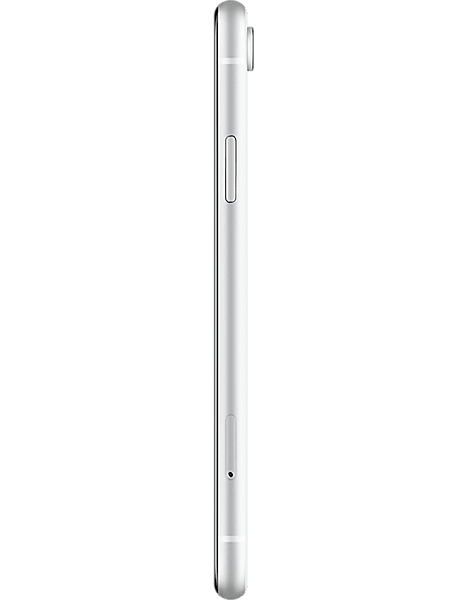
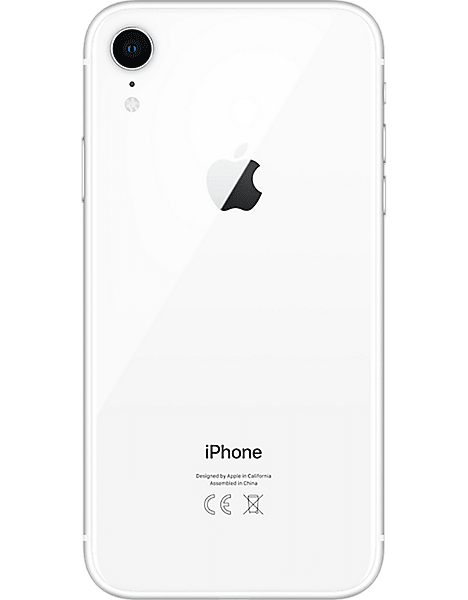
iPhone XR – display
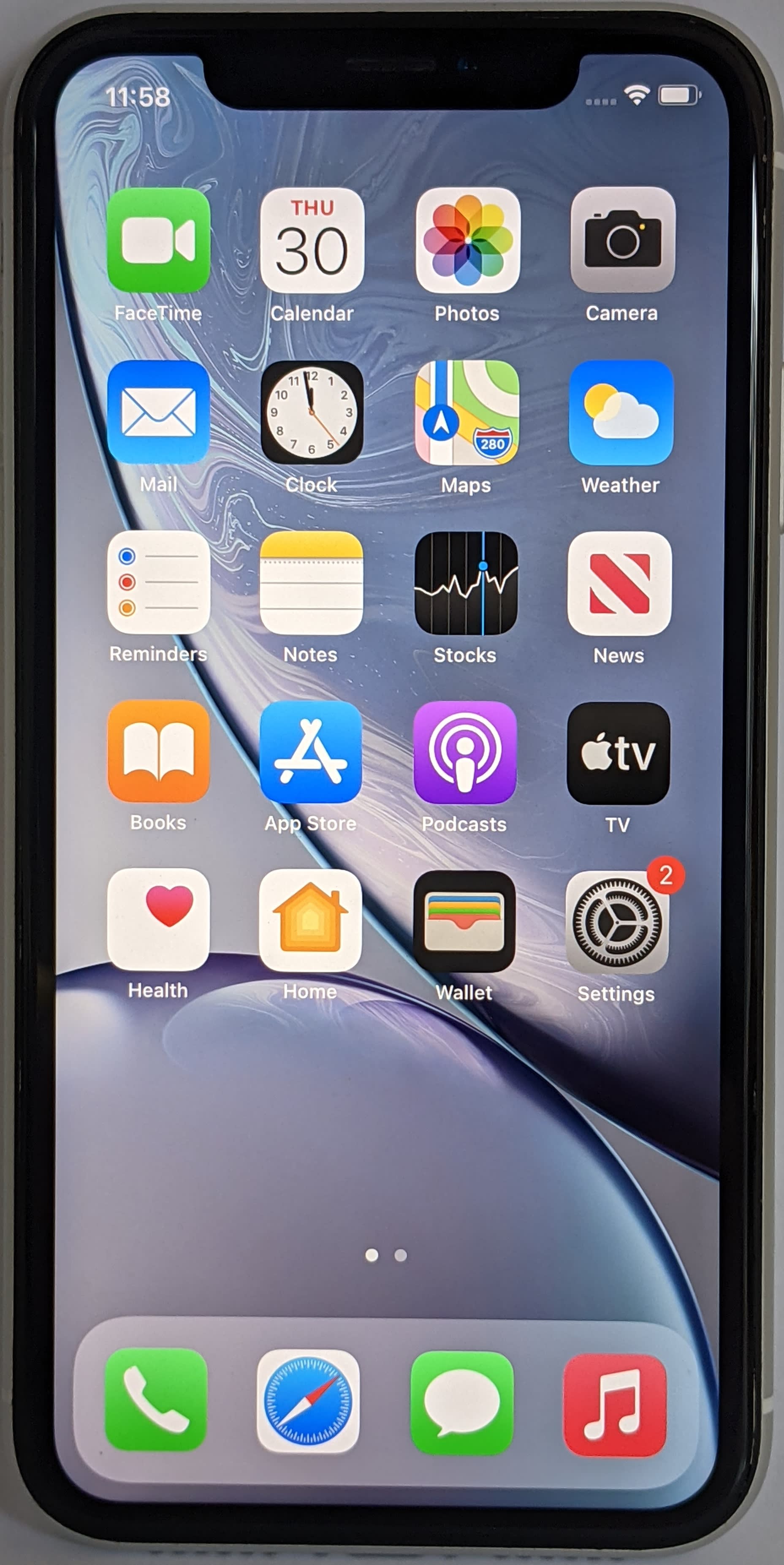
The iPhone XR makes a great first impression, but its biggest weakness is obvious from the moment you switch it on. Its 6.1” display is significantly bigger than the iPhone 8’s 4.7” screen, but it uses dated LCD technology, while the iPhone XS inherited the iPhone X’s lush 5.8” OLED.
Technically, an OLED screen is built from millions of LED lights, while an LCD has one backlight and millions of ‘shutters’. In practice, an OLED screen is brighter, has greater contrast, and typically comes with a higher resolution.
Sure enough, compare the iPhone XR and iPhone XS and you can immediately see how much brighter and more vibrant the flagship is. The iPhone XR screen isn’t bad for an LCD, but it’s totally outclassed by the iPhone XS and most newer phones.
iPhone XR – camera and video performance
Apple usually fits less impressive cameras to its mainstream phones, and that’s certainly the case with the iPhone XR. While the iPhone XS debuted a dual-camera, wide and extra-wide system, the iPhone XR has a single 12-megapixel (MP), wide-angle lens. It’s missing useful features – particularly the Night Mode that was introduced with the iPhone 11 – but it does offer optical stabilisation, and 4k video at up to 60 frames per second.
The iPhone XR and iPhone XS share the same 7MP front-facing camera, which was upgraded to 12MP on the iPhone 11. There’s no Night Mode, slo-mo or 4k video support, but there’s still a useful portrait mode, and 1080p HD video at up to 60fps.
In use, the iPhone XR turns in decent rather than brilliant photos. It’s noticeably worse than modern iPhones, particularly it doesn’t have their almost magical ability to ‘see’ in near-darkness. With only digital zoom, it’s harder to frame exactly the photo you want – zoom in to the maximum and you’ll get a noisier, less sharp image.
The latest smartphone cameras are comfortably better than the iPhone XR, but it’s still not a bad camera. If you just want to snap family and friends, or grab smooth and sharp videos in decent light, it’s more than up to the job.
iPhone XR – performance
Geekbench 5 results
CPU single-core scores:
- iPhone 13 Pro – Score= 1,746
- iPhone 11 – Score = 1,334
- iPhone XR – Score = 1,123
CPU multi-core scores:
- iPhone 13 Pro – Score= 4,899
- iPhone 11 – Score = 3,442
- iPhone XR – Score = 1,999
3DMark Wild Life Extreme results
Best scores:
- iPhone 13 Pro – Score= 3,118
- iPhone 11 – Score = 2,141
- iPhone XR – Score = 1,422
Worst scores (20-minute loop):
- iPhone 13 Pro – Score= 2,235
- iPhone 11 – Score = 1,442
- iPhone XR – Score = 951
The latest iPhone 13 models get Apple’s A15 Bionic chip, but the iPhone XR uses the A12 Bionic – three generations older. Despite getting on a bit, it still compares surprisingly well to most Android phones.
We test a phone’s number-crunching performance with the Geekbench 5 benchmark. The iPhone XR managed a 1,123 single-core score – ahead of even high-end rivals like the Samsung Galaxy S21 5G, and nearly twice what we got from a Google Pixel 5.
When it comes to 3D performance, though, this phone is being caught by the pack. We got a score of 1,433 on the 3DMark Wild Life Extreme benchmark. That’s not at all bad, but plenty of high-end Android phones are now faster – and the iPhone 11 is about 50% ahead.
At least, that’s the picture when the iPhone XR is cool. Start running an intensive app and the phone quickly heats up to the point where the processor needs to throttle itself back to prevent overheating. You can see this in longer benchmarks. On the phone’s final loop in Wild Life Extreme – after about 20 minutes’ work – it scored only 951. That’s a performance drop of about a third.
This slow down is common to all iPhones we’ve tested. While it means you won’t get sustained maximum frame rates, in practice the iPhone XR still has plenty of performance for general use and casual gaming. But if you are after the very fastest frame rates, you’ll need something newer.
iPhone XR – battery performance
While the iPhone XS is generally a much better phone than the iPhone XR, this phone goes a little longer on a charge. Apple says that when new, the iPhone XR would play video for 16 hours, while the iPhone XS would last only 14 hours. We got the iPhone XR to loop an HD video for just under 12 hours – the iPhone XS shut down after ten and a half.
That’s a victory for the iPhone XR, but neither phone got close to Apple’s figures. We should also point out that the iPhone XR we tested reported 100% battery capacity, but our well-used iPhone XS checked in with only 84% of the battery capacity it had when new.
Like other iPhones, the iPhone XR recovers quickly on a 20W charger. From empty it hit 50% in 26 minutes, 80% in 56 minutes, and was fully charged in an hour and 50 minutes. Wireless charging is slower, but the phone had no problems working with the Qi compatible dock in a modern car.
Battery life (movie playback)*
- iPhone 13 Pro – Time = 19hr 2mins
- iPhone 11 – Time = 14hrs 45mins
- iPhone XR – Time = 11hrs 54mins
Charge Time (0-80%)
- iPhone 13 Pro – Time = 53mins
- iPhone 11 – Time = 55mins
- iPhone XR – Time = 64mins
*Battery life test involves looping the playback of an HD movie from fully charged until the phone shuts down.
iPhone XR – options and additional features
The iPhone XR offered a huge 18 combinations of colour and storage. Entry-level models got 64GB, but you could choose from 128GB or 256GB – the biggest capacity was discontinued with the launch of the iPhone 11 in September 2019. On top of the typical black, white and red colour options, Apple added eye-catching blue, yellow and coral.
For two years, the iPhone XR came with a power adaptor and EarPods, but in October 2020 these were removed as part of Apple’s electronic waste initiative. If you want to buy a reconditioned iPhone XR, you’ll also need to buy a charger if you haven’t got one.
There aren’t any other options to think about, but as with all iPhones, a huge range of official and third-party accessories makes it easy to customise the look of the phone.

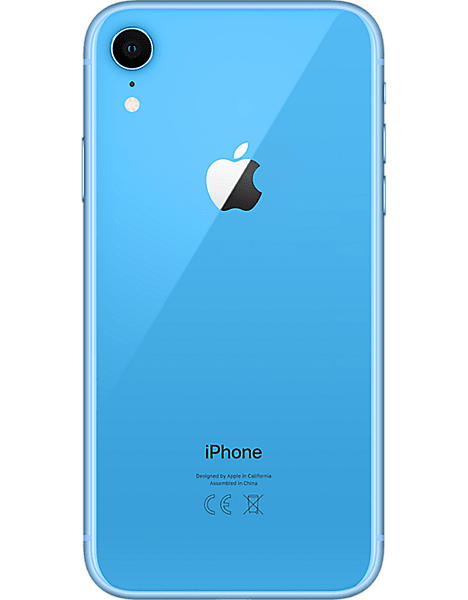
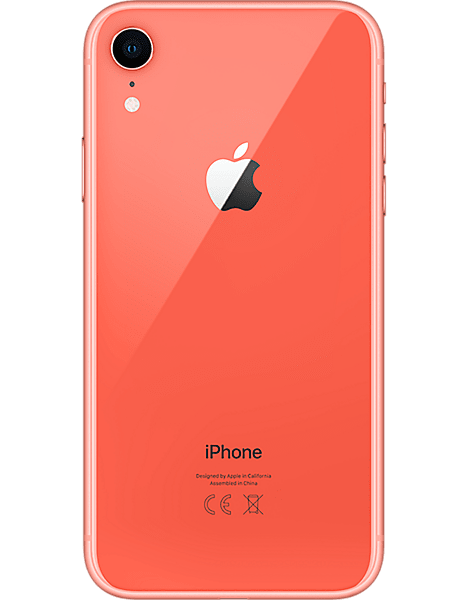
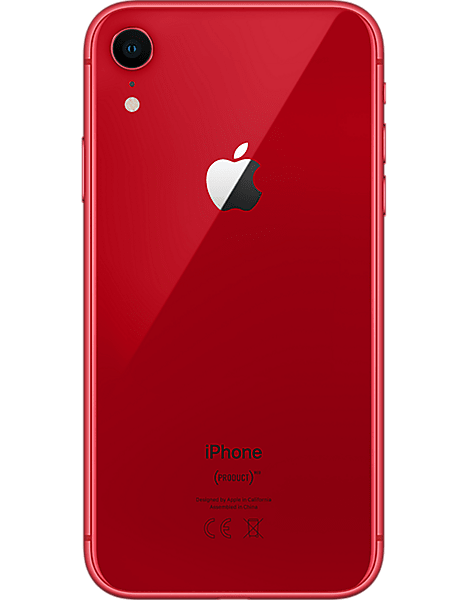


iPhone XR – build quality and things to look out for
The iPhone XR is generally a reliable and well built phone. With few moving parts (only the camera’s lens moves on a smartphone), there’s little to go wrong, but like any phone it can be damaged by hard objects like keys, or by being dropped. Using a case and glass protector increases the chances of surviving without a scratch.
Phone batteries can only handle a certain number of charge/discharge cycles, and on older iPhone XRs the battery capacity could be beginning to drop off. You can check by opening the Settings app, then choosing Battery>Battery Health. As we mentioned, our iPhone XR still reported – and acted like – it had 100% of its capacity when new. Most second-hand phones still have plenty of life in them.
iPhone XR – verdict
The iPhone XR introduced Apple’s new ‘bezel-free’ design to the mainstream iPhone. Compare it to the iPhone 8 and it’s a massive upgrade – faster, and with a much bigger screen in particular. It’s not too far behind the regular iPhone 11, either, but it has a more direct competitor.
The iPhone XS may share the same processor as the iPhone XR, but it’s smaller, has a better camera, and enjoys a much better screen. When new, not everyone could afford to pay extra for the flagship. Now it’s hard to recommend the iPhone XR, when you can buy a refurbished iPhone XS for only a few pounds more.
